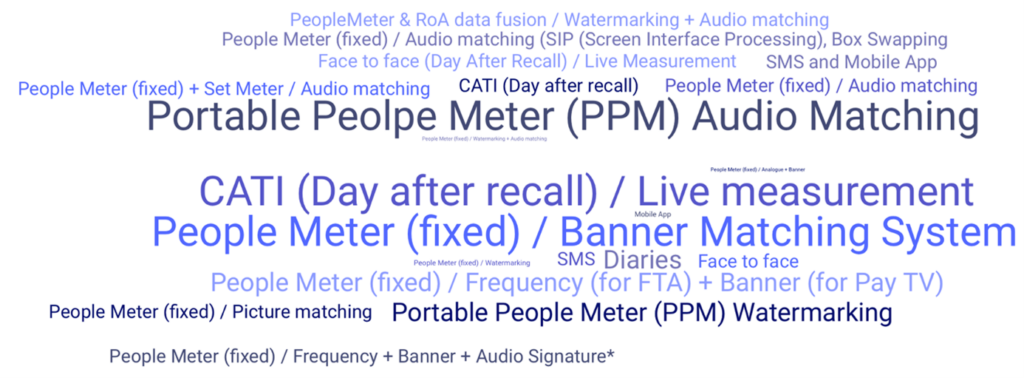Measurement of TV audiences has not yet arrived in the digital age
The most crucial KPI in the sports and advertising industry, the viewership rating, is still far from a global standard

Sports heavily influence media coverage
Especially from December to February, one sporting highlight follows another. Whether in winter sports with the Four Hills Tournament, in football with the African Cup of Nations (AFCON), in tennis with the Australian Open, or the increasingly media-focused American football with the NFL and the highlight Super Bowl, sports heavily influence media coverage even in our current crisis time, sometimes even dominating it. But what about the documentation of this media success on TV.
Even in 2024, linear TV remains one of the most important media channels for sports, at least according to common understanding. However, sponsors/advertisers, rights holders, and event organizers need reliable figures to justify investments, initiate optimizations, and make ROI calculations compared to other engagements. Media organizations and individual TV channels occasionally announce numbers, especially in established TV landscapes such as Germany, the UK, or the USA. But what about the international comparability of these numbers? What about smaller private channels? What about streaming providers? The more closely interested parties scrutinize the existing ‘official’ reach or channel figures, the more questions arise! And when, for example, a sponsor wants to compare media coverage across multiple countries, they almost immediately encounter methodological differences in the calculation of audiences, making international comparability challenging.

In times when social media channels, comprehensive online coverage, and VoD/streaming are increasingly redirecting viewers away from traditional linear television, live sports continue to offer one of the few opportunities to gather people in front of the TV at the same time. However, the actual number of viewers, whether in Germany, Australia, the USA, or Cote d’Ivoire, remains as hypothetical as it was in analog times. No measurement provides an exact survey of all viewers in the respective market; in about 30% of TV markets, there are reasonably valid estimates. However, these estimates do not claim to answer all the questions mentioned.
TV channels compete against 100% measurable digital media platforms
In the remaining almost 70% of TV markets worldwide, there are still no ‘official’ ratings for the broadcasting channels. The only thing that exists are pure estimations, usually from media analysts who frequently input a consistent small number of supposed viewers for entire countries, channels, and programs over time.
How can TV channels demonstrate their relevance for sports in this way? How can growing markets like the more than 50 countries in Africa (approximately 1.4 billion people) or the 80+ countries (approximately 4.8 billion people) in Central, Middle, South, and Southeast Asia prove their value for global sports events? How can entire regions with numerous TV channels compete against 100% measurable online media and social media platforms in the battle for advertising revenue? With valid KPIs that determine credible CPTs? Unfortunately, mostly absent so far.
But if linear television in sports wants to keep its significance for the advertising industry, stakeholders must begin to provide valid viewership numbers ─ no manual entry of estimated quotas by a more or less skilled analyst in lists and databases! What the market needs is an internationally identical approach to truly compare the reach of international sports events. The previously advocated solution of sample analyses and subsequent extrapolation to diverse populations, along with qualitatively questionable estimates with many gaps, cannot solve this issue. Urgent reassessment is required!
X Media Insights offers an innovative approach globally
This is the challenge we have taken on at X Media Insights. With our mathematically developed model, independently created since 2018, we can calculate TV audiences on an international scale. We consider various factors, such as the unique characteristics of countries, regions, competing programs, and more, which significantly influence reach, incorporating over 70 influencing factors.
Do we provide a guarantee to accurately represent the actual audience 100%? Definitely not! The actual audience is an objective number for each broadcast that no one exactly knows! Even established providers don’t know the exact 100% audience of a show. However, what we offer is a mathematical calculation of the respective audience that comes much closer to the actual audience than all previous attempts and measurement methods, even on a local, national, and international level.
Think along with us and learn more about our approach. Contact us. From now on, we will continuously address topics related to our model and report on our approach.


